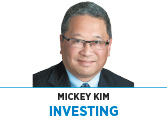Subscriber Benefit
As a subscriber you can listen to articles at work, in the car, or while you work out. Subscribe Now “A hot stock doubles and then doubles again in a matter of weeks. Thousands of people who have never invested in their lives suddenly try to beat the market,” prefaced Jason Zweig in The Wall Street Journal.
“A hot stock doubles and then doubles again in a matter of weeks. Thousands of people who have never invested in their lives suddenly try to beat the market,” prefaced Jason Zweig in The Wall Street Journal.
He wasn’t describing today’s chase for the next Tesla, but the peak of one of the biggest manias in financial history, which occurred during the summer of 1720—a period known as the “South Sea Bubble.”
That August, shares in speculative favorites like the South Sea Co. (+650% YTD), Royal Exchange Assurance (+1,243%) and London Assurance (+4,220%) peaked, sweeping up royalty (King George I), scholars (Sir Isaac Newton), merchants and tradesmen alike in their wake. Alas, all bubbles eventually pop, and this one did in September. By the end of 1720, the stocks had fallen 81% to 96% from their peaks.
As Mark Twain said, “History doesn’t repeat itself, but it does rhyme.” Fast-forwarding 300 years, people are still drawn to get-rich-quick schemes like moths to the flame.
The Trump administration wanted to identify companies that could boost the manufacture of drugs in the United States, reducing our reliance on foreign suppliers. Trade adviser Peter Navarro led the effort and landed on the Eastman Kodak Co. (KODK), which he subsequently assisted in securing a $765 million loan from the U.S. International Development Finance Corp., to support the launch of Kodak Pharmaceuticals.
Kodak is a struggling photography company with a history in chemicals and manufacturing, but only a tiny presence in pharmaceuticals. Kodak filed for bankruptcy in 2012, then made a brief splash six years later when it made a dubious attempt to recast itself as a cryptocurrency play by lending its name to a digital currency (KodakCoin) and Bitcoin-mining computer (Kodak KashMiner), causing its stock to triple for a hot second.
On Friday, July 24, KODK traded 75,000 shares and closed at $2.10. Just after noon on Monday, July 27, the websites of the ABC and CBS affiliates in Rochester posted stories about a media advisory Kodak had distributed about a Kodak initiative with the government in response to the pandemic.
The advisory, which quoted a spokesperson saying the initiative “could change the course of history for Rochester and the American people,” didn’t indicate the information wasn’t supposed to be released publicly.
Kodak asked the stations to remove the stories from their websites (which they did), but in the age of digital investment communities on Twitter, Discord and Reddit, once the genie is out of the bottle, it’s impossible to put him back in. KODK trading volume surged to 1.6 million shares and closed at $2.62 (up 25% from the prior day).
The next morning, the WSJ reported Kodak would receive a government loan to produce drug ingredients. Trading volume exploded to 284.7 million shares, and the stock reached an intra-day high of $11.80. President Trump made it “official” at his 5 p.m. press briefing, hailing it as “one of the most important deals in the history of the U.S. pharmaceutical industries.”
To no surprise, speculative fever reached a peak the following day, July 29. The stock traded as high as $60, as more than 100,000 users of the popular Robinhood trading app jumped in.
Alas, the three-day, $2-to-$60 rocket-ship ride for KODK speculators proved to be short-lived.
As it turned out, the agreement between the government and Kodak was preliminary and far from a “done deal.” The Securities and Exchange Commission has opened an investigation into how the company disclosed information as well as the fortuitous timing of stock options grants to Kodak CEO Jim Continenza, (1.75 million shares) and other executives on July 27, representing a potentially ginormous financial windfall.
Additionally, the company is reviewing the well-timed gift (3 million shares of KODK on July 29, valued at $116.3 million) by board member George Karfunkel and his wife to a religious charity controlled by Mr. Karfunkel, which could generate tens of millions of dollars in income tax benefits for the couple.
On Aug. 7, the DFC announced it was halting the loan, pending review of the “troubling” allegations. Supporters of the deal are nowhere to be found. KODK currently trades around $7.
Fear of missing out and the siren song of getting rich quick are powerful motivators, but the way to make money in the stock market is s-l-o-w-l-y. Try to hit singles and doubles and let the miracle of compound interest put runs up on the scoreboard.•
Kim is Kirr Marbach & Co.’s chief operating officer and chief compliance officer. He can be reached at 812-376-9444 or [email protected].
Please enable JavaScript to view this content.
